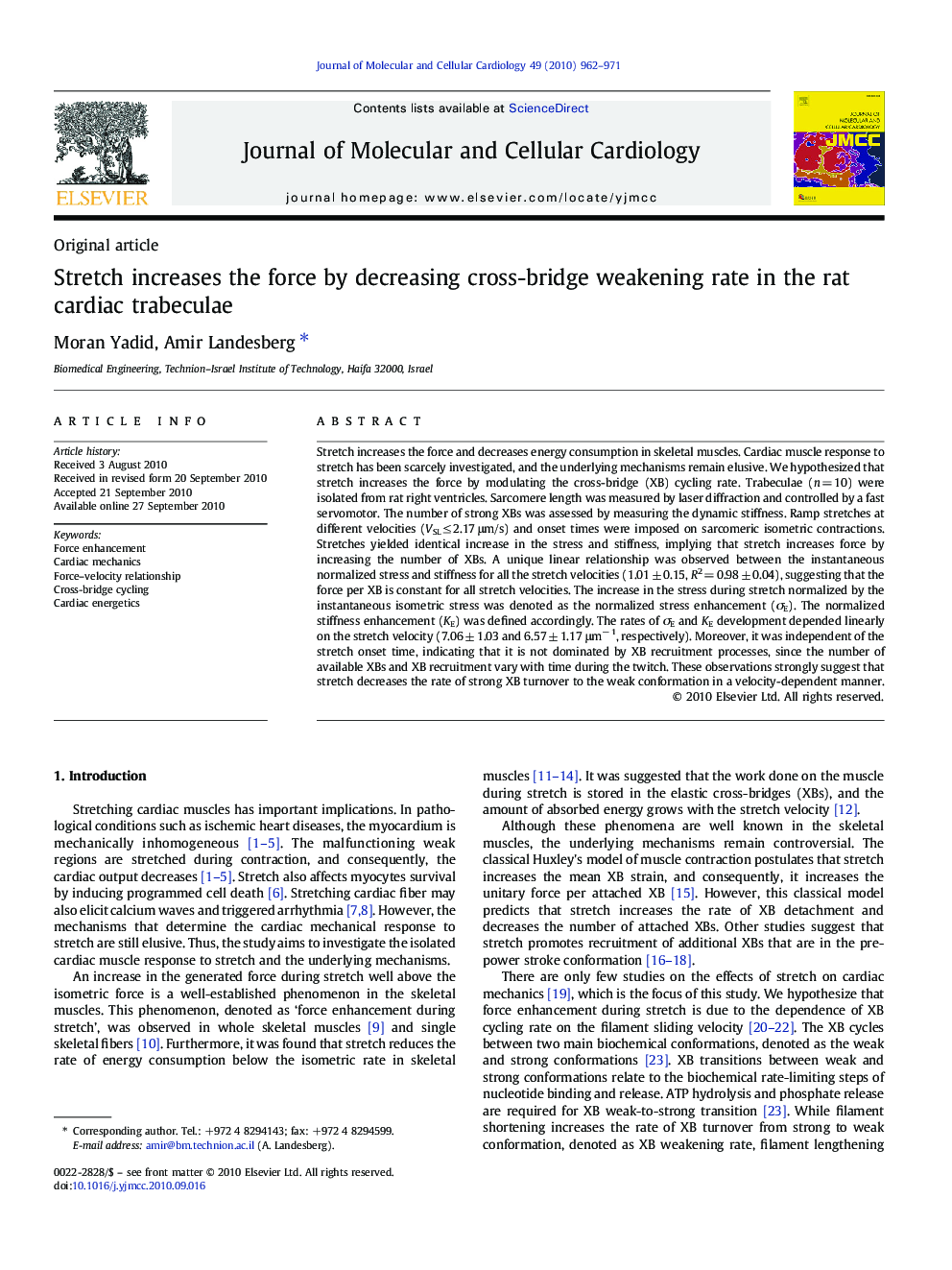| Article ID | Journal | Published Year | Pages | File Type |
|---|---|---|---|---|
| 2190905 | Journal of Molecular and Cellular Cardiology | 2010 | 10 Pages |
Stretch increases the force and decreases energy consumption in skeletal muscles. Cardiac muscle response to stretch has been scarcely investigated, and the underlying mechanisms remain elusive. We hypothesized that stretch increases the force by modulating the cross-bridge (XB) cycling rate. Trabeculae (n = 10) were isolated from rat right ventricles. Sarcomere length was measured by laser diffraction and controlled by a fast servomotor. The number of strong XBs was assessed by measuring the dynamic stiffness. Ramp stretches at different velocities (VSL ≤ 2.17 μm/s) and onset times were imposed on sarcomeric isometric contractions. Stretches yielded identical increase in the stress and stiffness, implying that stretch increases force by increasing the number of XBs. A unique linear relationship was observed between the instantaneous normalized stress and stiffness for all the stretch velocities (1.01 ± 0.15, R2 = 0.98 ± 0.04), suggesting that the force per XB is constant for all stretch velocities. The increase in the stress during stretch normalized by the instantaneous isometric stress was denoted as the normalized stress enhancement (σE). The normalized stiffness enhancement (KE) was defined accordingly. The rates of σE and KE development depended linearly on the stretch velocity (7.06 ± 1.03 and 6.57 ± 1.17 μm− 1, respectively). Moreover, it was independent of the stretch onset time, indicating that it is not dominated by XB recruitment processes, since the number of available XBs and XB recruitment vary with time during the twitch. These observations strongly suggest that stretch decreases the rate of strong XB turnover to the weak conformation in a velocity-dependent manner.
Research Highlights►Stretch increases the force by decreasing the cross-bridge cycling rate. ►The stress and stiffness development rates are linear functions of the velocity. ►The force per cross-bridge is constant and identical at all stretch velocities. ►The force and stiffness increase in parallel during isovelocity stretches. ►These phenomena are independent of the stretch onset time (activation level).
